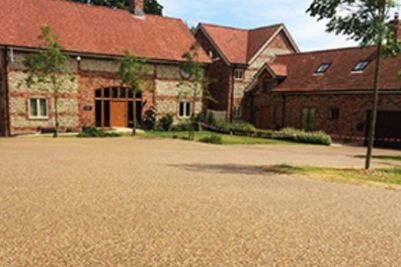These two surfacing options combine natural aggregates with resin, then laid over the top of an existing substrate(Like Asphalt, Concrete, Compacted Crushed Rock).
The main difference between Resin Bound Stone and Resin Bonded Stone can be simply checked that one is permeable, and the other is not.
Bound: Aggregate is mixed with resin and curing agent in a high power mixer, then handy troweled into the site, which can produce a surface that is anti-skid and porous.
Bonded: A layer of resin is laid onto a surface, then a fine aggregate is applied over the top and rolled in. That will produce a rough non-permeable surface.
So Resin Bound Stone perform better porous function than Resin Bonded Stone, which can allows water to go directly into ground and better environmental compliance.
Resin Bound Stone is made of natural coloured stone and high-weather resistant modified resin. It is a novel paving material for artistic landscape.
We can no only choose aggregate with different colours, textures and size, but also your desired design on the drawing, which can be completely displayed on the ground. So it can meet different requirement of environment and individual character.
For fading issue, the stone is a natural colour and the resin adhesive is transparent, so there is no colour fading problem at all. Resin Bound Stone has ecological, permeable, breathable and better anti-skid functions, and is environmentally friendly, non-toxic, non-radiation and non-environmental pollution ecological paving materials.
The main difference between Resin Bound Stone and Pervious Concrete is the difference in the selection of aggregate. It has a more decorative effect than Pervious Concrete and is a rare green material for shaping the ecological landscape.
Success Crete specializes in producing the ecological permeable materials(Like Pervious Concrete,Resin Bound Stone, Porous Asphalt), and offer professional construction services.











